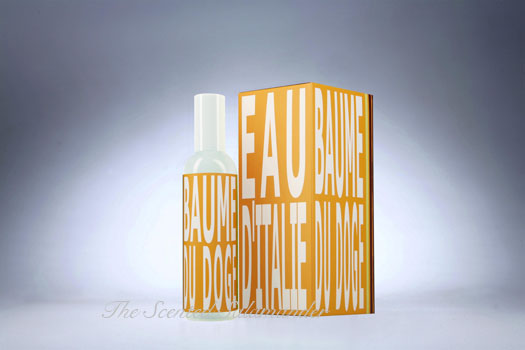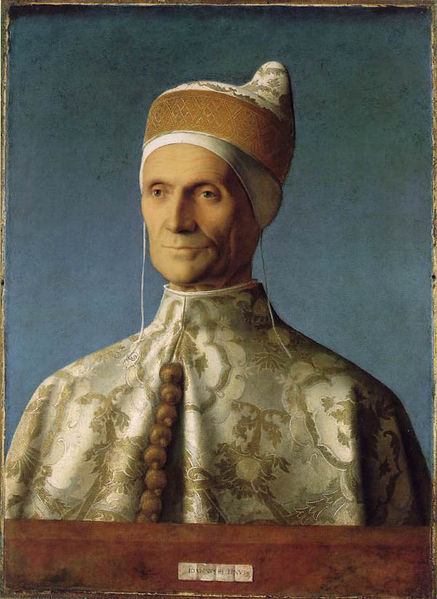Eau d'Italie Baume du Doge (2008): Renaissance Italy In A Contemporary Style {Perfume Review & Musings}

As previously announced, Baume du Doge is the latest creation by niche perfumery Eau d'Italie, a brand which continues to show consistent interest in capturing the distinctive atmospheres of the Italian regional landscape and history (see our reviews of Rose Paestum, Sienne L'Hiver, Bois d'Ombrie, Magnolia Romana). The composition is by perfumer Bertrand Duchaufour who is able to go on collaborating with Eau d'Italie thanks to his flexible appointment as the new resident-perfumer for L'Artisan Parfumeur.
This time the source of olfactory inspiration is the merchant past of Venice, a city seen as a crossroad of civilizations where spices from the East came to mingle with the indigenous agrumes of the Italian peninsula.
"Slowly making their way from India, Persia or China on the back of mules and
woolly Bactrian camels, then aboard daring merchant ships, a world of spices
found its way to Venice, their names as exotic as the languages spoken by their
traders.
Roots, barks, seeds, pistils, flowers, rhizomes and resins took hold of the local
taste, flanking and often blending with local produce. Thus myrrh and
frankincense, saffron and clove, cardamom and vanilla met sweet oranges, sharp
bergamots and wild fennel in a rich and warm fusion, the use of which ranged
from medicine to perfumery, often at the same time."
The wish to go back to a time when the line between a medicine and a perfume was thin is further emphasized by the beautiful name of the fragrance, Baume du Doge, which sounds like a wound-healing balm both for the body and soul. We are invited to imagine a recipe favored by one of the 120 doges that crossed history and perhaps passed on as a secret a balm imbued with the curative properties that paradoxically one always wants to ascribe to those very persons that can issue a death or torture warrant and take your lives, or at least conspire towards your demise; historian Marc Bloch studied this mystical power in Les Rois Thaumaturges.
The Doge of Venice, whose title derives from the Latin Dux (Duke) remained a merchant as his salary was less than substantial and so, as in the case of the Bourreau de Paris who could also be a little bit of a cosmetician-pharmacist, he might have concocted a recipe on the side based on his experience of Oriental ingredients, sold to secure additional earnings ...

Baume du Doge smells of ancient golds and exotic fragrant woods. It opens on a mouthwateringly creamy and savory saffron accord touched with the green bites of cardamom, coriander and the wintergreen facets of pepper. Fennel from France was added. A slight smokiness arises from the liquid of the perfume...Frankincense.
The perfume offers in general a deep - by suggestion more than due to the influx of raw materials - spicy honeyed and amber-y personality evoking the scent of an ancient pomander, but as if it had been re-written in a contemporary language or photographed with a digital camera that is, without undue fuss or ornamentation. As the scent develops, there is the deeper and fuller sensation of a plunge in a golden well filled with amber and honey; Baume du Doge becomes more intense evoking aged cognac in a damp oakmoss casket (myrrh) and iris-y leather. Progressively the scent becomes more powdery, highlighted by soft woody nuances of carrot and iris. The drydown is chocolatey with a waxy note that sticks out a bit, which cannot be called classically harmonious and feels medicinal, evoking the baume du Pérou.
On a functional level it is a warm generous perfume for fall that somehow manages to convey the colors and climate of the season when leaves turn and maple syrup trickles generously.
The orange note, which piqued my interest as a potentially difficult note to render with any sense of luxury and rarity nowadays goes from liquorish-y to sweet. It is a bit syrupy and sticky even, with a beautiful spicy-cabinet counterpoint. The agrumes avoid smelling pedestrian thanks to a certain level of intensity and pungency, resting in part on a powerful cedar note that makes the orange seems more wood than fruit, and hence less prosaic, more abstract and precious (thanks to the spices as well). I am invited to think of dark brown glistening candied Kumquats that look and smell a bit woody when I try to look for a visual equivalent of this specific orange-accord impression.
The scent on the whole is very balmy, like the aromatic air blowing softly by the seaside and no doubt circulating within the corridors of the palace of the doges lifting a few hieratic tapestries on its way.
Although the sea is an important theme both for the brand Eau d'Italie and the Doges of Venice who celebrated annually the marriage of Venice with the sea by throwing a wedding ring from the Bucintoro, it is a non-literal and sophisticated evocation of that familiar sensation. There is a kind of contained freshness to the composition, and the perfume is never heavy.
Baume du Doge in the end is an economical, streamlined evocation of the golds and pump of the Doge of Venice's palace. There is no hint of decadence or overblown ostentation nor excess. It remains through and throughout an intellectual vista onto the past of Venice. One might regret that not more of the chaos and din of this crossroad of civilizations were integrated into the composition, at the risk of appearing too theatrical or baroque or Cecil B. de Mille or worse, passéist. The motif is medieval and pre-modern but the style is unmistakenly contemporary, cool and collected despite its inherent spicy oriental warmth.
The scent presents affinities with perfumes like those of Frapin (1270: Caravelle Epicée) and Juozas Statkevicius.
Top notes: Sweet Orange and Bergamot from Calabria - Cinnamon from Ceylon,
Coriander and Cardamom from India, Fennel from Southern France, Black Pepper
from Sichuan.
Middle notes: Myrrh and Frankincense from Somalia, Clove from Zanzibar and
Cedar from the Atlas, Saffron.
Base notes: Vetiver and Vanilla from the Bourbon Islands, Benzoin from Siam










Thanks for taking time with both history and your impressions...I am, not surprisingly, intrigued on both counts.
Methinks I have been a bit influenced by the current media saturation of a certain perfume critic...does anybody else see a resemblance to Luca Turin in the portrait of the Doge?
Lol, I hadn't thought about that. I think that Luca Turin could have been a good subject for Bellini though.
Just tried this scent today and I'd say your description really nails it. Love it! Definitely FBW for me.
Thank you. It's nice to find a new perfume to love, isn't it?